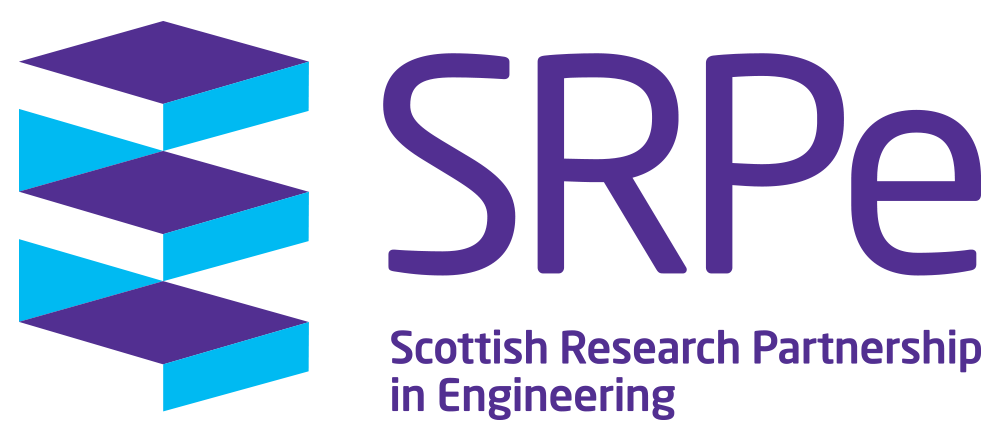3-D printed devices for the separation of biologics
Led by: University of Edinburgh
Industry Partner: FujiFilm
Academic Lead: Dr Simone Dimartino
PhD Student: Mariachiara Conti
Summary:
The project aims at developing bespoke 3D printed devices for the manufacture of life changing drugs.
3D printing has physically enabled the fabrication of perfectly ordered structures. This could revolutionise manufacturing of traditional purifications, moving away from traditional separation methods still relying on technologies developed in 1940. However, the employment of 3D printing in bioseparations has been hindered by the lack of 3D printable materials with appropriate chemistry, and poor printing resolution.
Mariachiara and supervisor Dr Dimartino developed a novel ink that can be 3D printed at high resolution using Digital Light Processing. The ink also displays smart chemistry to enable flexible functionalisation to target different therapeutics.
The work so far showed that the ink can be successfully 3D printed with resolutions down to 50 µm and further customised to interact with different target proteins. This study further supports the potential capability of 3D printing to address new medicine separation and purification challenges.
3D printing is a disruptive technology that enables digital 3D models transformation into real objects using computer aided design tools. Today, many sectors from architecture to food industry are being revolutionised by 3D printing.
This project aims at 3D printing chromatography columns for the biomanufacturing industry, i.e. devices for the purification of therapeutics. Current purifications rely on packed beds, a technology that is affected by sub-optimal performances and irregular flow patterns due to the random nature of the packing. 3D printing could revolutionise manufacturing of traditional chromatography stationary phases by fabricating complex but ordered structures with improved flow and chemical properties. However, the employment of 3D printing in bioseparations has been hindered by the lack of 3D printable materials with chromatographic functionality, and poor printing resolution leading to features of only about 500 µm.
In this project, different inks were developed so that it could be 3D printed at high speed using Digital Light Processing. The material formulation was tuned to obtain a platform material based on glycidyl methacrylate (GMA) as key monomer. GMA bears a photopolimerisable group on one hand and an epoxide functional group on the other. The epoxide group can be easily functionalised with tailored ligands to bind different types of biologics.
To achieve sufficient surface area requirements that are key in chromatography application, pore forming agents were introduced to the ink formulations. This “sacrificial” phase is washed out after polymerisation with subsequent superimposition of small pores in the nano-scale.
Photoreactivity characterisation and printability enabled selection of a novel ink that could be 3D printed with resolution down to 50 µm at fast speed (100 ml in 1 h). The newly formulated material was 3D printed with feature size down to 50 µm for simple linear features, and down to 200 µm for complex ordered geometries such as triply periodic minimal surfaces. Following the fabrication, the material was functionalised for ion exchange and affinity chromatography using simple immobilisation chemistry protocols. The 3D printed columns demonstrated satisfactory separation of model proteins and protein capture with up to 86% purity in a single run.
This work shows the development of a platform material that can be successfully 3D printed at speed and with high resolution. Easy chemical customisation makes it possible to specifically interact with different target molecules. This study further supports the potential capability of 3D printed chromatography media for bioseparations.
Key Results/Outcomes:
· Development of a novel porous ink with customisable functional chemistry and 3D printable at resolution down to 50 µm
· Fabrication of hierarchically porous devices with complex ordered structure at the sub-mm scale and super-imposed porosity at the nano-scale
· Assessment of material flow properties (i.e. porosity, permeability, pressure drops) and comparison against current benchmarks;
Conference Posters:
· Surface functionalisation of 3D printed device with tailored ligands
· Proof of protein separation and capture of industrially relevant feedstocks
· International symposium on Separation of Proteins, Peptides and Polynucleotides (November 2021)
· International symposium on Preparative and Process Chromatography (May 2022)
· Seminar and workshop at Pfizer, San Diego (May 2022)
Collaboration:
The project team have collaborated with the University of Ljubljana which hosted Mariachiara for a month. they worked together to identify the best reaction conditions to functionalise the 3D printed material.
Furthermore, the partnership with FujiFilm Diosynth Biotechnologies has led to two placement (total of 2 months) in which Mariachiara has been able to test functionalised 3D printed column with industrially relevant molecules.
Contact Information:
Mariachiara Conti
PhD student, University of Edinburgh.
M.Conti@sms.ed.ac.uk
Dr Simone Dimartino,
Senior Lecturer, University of Edinburgh.
Simone.Dimartino@ed.ac.uk
